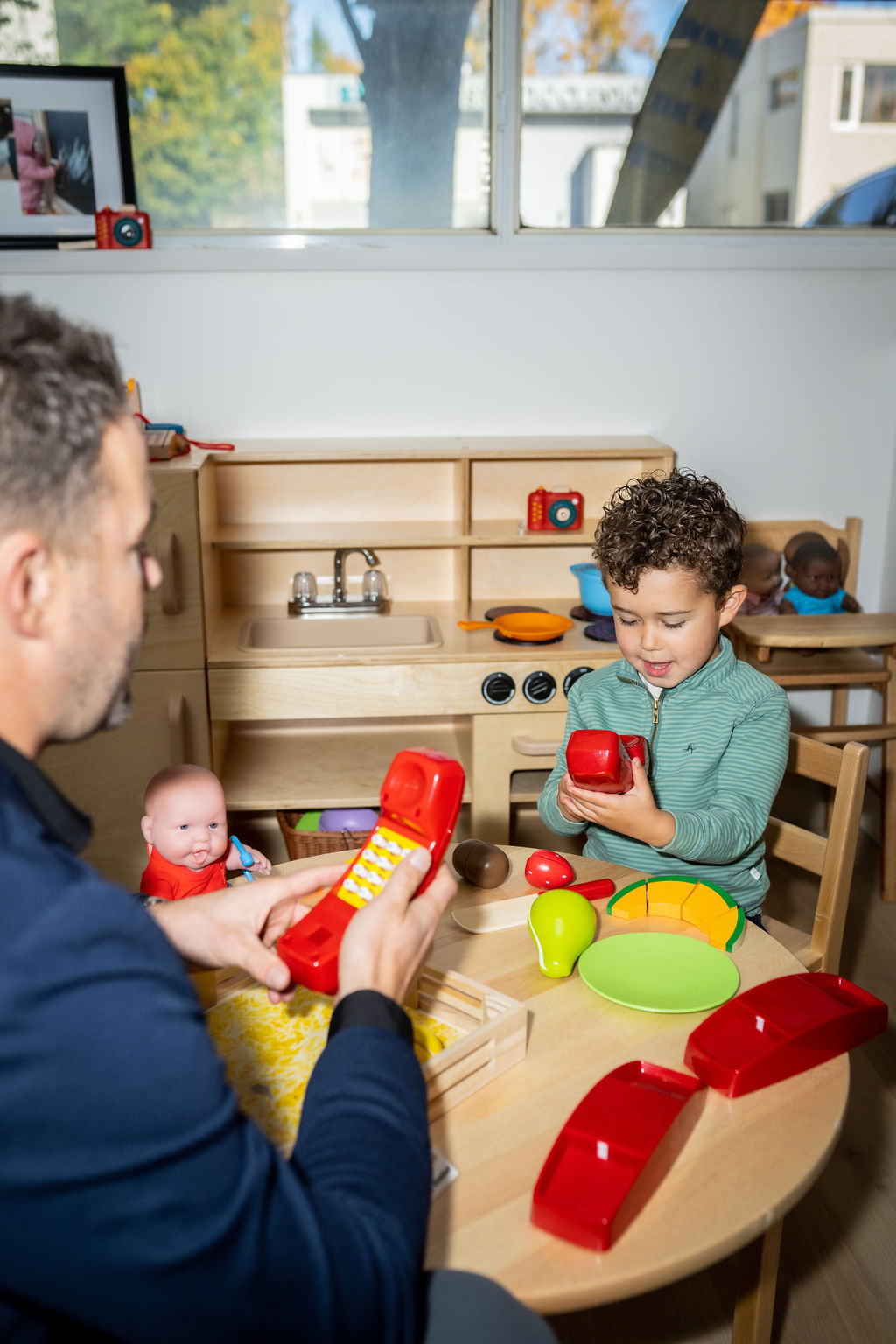Every new parent asks the same question: when do babies sleep through the night? The honest answer is that it varies widely for every baby and every family. Most babies aren’t ready to sleep through the night until well after the newborn stage, and that’s perfectly normal..
Understanding typical sleep milestones and knowing when safe strategies like sleep training, dressing a baby for sleep, or introducing a pacifier make sense, can help families rest easier and help manage expectations to make the journey a little easier.
What Counts as “Sleeping Through the Night”?
Pediatricians usually define it as one uninterrupted stretch of 6 – 8 hours. For exhausted parents, that’s a victory but babies still need night feeds and cuddle checks before they reach this milestone.
A Realistic Sleep Timeline by Age
A baby’s ability to sleep for long stretches is tied directly to their age and physical development. Understanding these natural milestones can help you navigate the journey.
- Newborns (0–3 months): A typical longest stretch of sleep is only 2–4 hours. This is perfectly normal as newborns need to eat frequently due to their tiny stomachs. Their sleep is naturally fragmented and they have an immature circadian rhythm (means a baby’s internal body clock isn’t yet set to a 24-hour schedule. Their body doesn’t know the difference between day and night, which is why they wake up frequently around the clock). It’s also important to remember that newborns can sleep in a bassinet for several months, provided they meet the weight limits and haven’t started rolling over yet.
- Infants (3–4 months): Around this age, many babies begin to sleep for longer stretches, often 4–6 hours at a time. Their sleep cycles are lengthening, but growth spurts can still cause night feeds. This is a common time for sleep regressions (a temporary period of disrupted sleep in a baby or toddler who previously slept well. It’s often triggered by a major developmental leap, such as learning to roll over, crawl, or speak. The child’s brain is so busy processing new skills that it temporarily interferes with their ability to sleep through the night) so be prepared for some temporary disruption.
- Older Infants (5–9 months): This is when significant progress happens. By 5–6 months, many babies can sleep for 6–8 hours, often dropping that 2 a.m. feed. This is due to sleep consolidation (the process of a baby’s sleep cycles becoming longer and more organized. It means a baby’s brain is maturing and is able to link together multiple short sleep cycles into one long, continuous stretch of sleep. This is the main reason why babies who used to wake up frequently begin to sleep for 6-8 hours or more at a time) and a better ability to self-soothe. By 7–9 months, many can achieve a long stretch of 8–12 hours. While not universal, a healthy baby at this age has the physical ability to sleep through the night without a feeding.
- Older Babies (10–12 months+): By 10 months, most healthy babies can sleep overnight for 10–12 hours without feeding. However, this age can also bring sleep regressions tied to major developmental milestones like crawling or walking. Consistency in your routine is still key to a good night’s rest.
The Safe Sleep Essentials
A safe sleep environment is the most important factor for baby sleep. Here are the answers to common questions about it.
- Can newborns sleep on their side or tummy? No. Both side-sleeping and tummy-sleeping raise the risk of SIDS. Always place babies on their back on a firm surface until they can roll independently both ways. The back is the only position recommended to reduce risk.
- When can infants sleep with blankets or loveys? Wait until your child’s first birthday. Before that, use a fitted sheet only. Blankets, pillows, and soft toys can pose a suffocation risk for infants. To keep your baby warm, choose a breathable sleep sack instead of loose blankets.
- Can a newborn sleep with a pacifier? Yes, once breastfeeding is well established (usually after 3–4 weeks). A pacifier at naps and bedtime can lower the risk of SIDS. If it falls out, you don’t need to put it back in.
- How long can a newborn sleep in a bassinet? Most bassinets have a weight or mobility limit (often around 15 lbs / 6.8 kg or when the baby starts rolling). Transition to a crib before exceeding either threshold to ensure your baby is in the safest sleep environment.
Dressing Baby for Sleep (Room-to-Gown Guide)
To keep your baby warm without a blanket, it’s important to know how to dress a baby for sleep. A good rule of thumb is to dress your baby in one more light layer than you are comfortable wearing.
Room Temp | What to Dress Baby In |
20–22 °C (68–72 °F) | Cotton footed sleeper + light sleep sack |
18–19 °C (64–67 °F) | Long-sleeve onesie + medium sleep sack |
23 °C + (73 °F +) | Short-sleeve bodysuit or just a diaper + light muslin sleep sack |
Note: Overheating increases SIDS risk, so always be mindful of your baby’s temperature.
Gentle Ways to Encourage Longer Stretches
Once you’ve mastered a safe sleep environment, you can focus on establishing a routine that encourages longer stretches of sleep.
- Day vs. Night Cues: Keep daytime feeds bright and chatty. At night, dim the lights and lower your voice to teach your baby the difference between day and night.
- Consistent Bedtime Routine: A predictable routine like a warm bath, pajamas, a book, or a cuddle signals to your baby that it’s time to wind down. Even newborns learn that this pattern equals sleep.
- The Power of a Pacifier: As mentioned, a pacifier can be a valuable tool for soothing and has been shown to help reduce the risk of SIDS.
- Responsive, Not Reactive: When your baby stirs or makes noises, pause for a moment. Some babies will resettle themselves without your help.
- Strategic Dream Feed: For babies over a few months old, offering a final feed before you go to bed (around 10 p.m.) can help them get a longer first stretch of sleep.
When to Consider Sleep Training
For older babies (6 months+), if frequent night waking persists, you can explore how to sleep train a baby. Most experts suggest waiting until 5–6 months, when babies can self-soothe and no longer need frequent night feeds. If you choose to try it, popular gentle approaches include:
- Pick-Up/Put-Down: Comfort your baby briefly, then lay them back down drowsy.
- Fading: Gradually reduce how much you help (e.g., rocking or patting) a little each night.
- Ferber-style Check-Ins: Offer reassurance at timed intervals without picking them up.
If you try any of these methods, be consistent with naps, feeds, and your bedtime routine for at least two weeks before judging the results.
How The Learning Nest Supports Healthy Sleep
At The Learning Nest, our infant and toddler rooms follow strict safe-sleep guidelines: back sleeping, and routine safety checks.
Educators use gentle, social-based cues like a darkened room to help children settle for naps, mirroring healthy habits families can adopt at home. We also share daily nap reports with parents so you can align home bedtime with daytime sleep patterns.
“From an educational standpoint, our consistent sleep routines provide children with a sense of safety and predictability, which is key to their overall development. When children know what to expect, they can relax and fully settle into rest, allowing their bodies and brains to recharge. This not only supports healthy physical growth but also strengthens their ability to focus, regulate emotions, and engage in learning when they’re awake. For example, I’ve noticed that children who come into the classroom after a restful nap are calmer, more attentive, and eager to participate which makes such a positive difference in their learning experience and social interactions.” – Fatima Taveres, Director of Quality
Ultimately, remember that every baby is unique. There is no magic age when they will start sleeping perfectly. Be patient with yourself and your little one. The most important thing is to focus on a safe, loving routine, and the long stretches of sleep will come in time.
We’d love to show you how we help your child thrive each day. Schedule your tour today!





